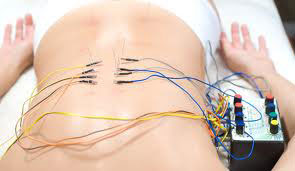Electroacupuncture
Electroacupuncture stimulates the body’s healing processes by sending electrical impulses through the muscles and nerves. It promotes the release of endogenous neurotransmitters such as beta-endorphin, a natural analgesic. Acupuncture has been used for thousands of years. Electroacupuncture was developed around the mid-1900s and has proven to significantly enhance traditional acupuncture treatments. It uses same points and principals as traditional acupuncture.
How does electroacupuncture work?
As with traditional acupuncture, needles are inserted at specific points along the body. The needles are then attached to a device that generates continuous electric pulses using small clips. These devices adjust the frequency and intensity of the impulse being delivered, depending on the condition which is being treated. The frequency and intensity of the electricity used by the practitioner varies, based on the patient and the condition being treated.

What conditions can electroacupuncture treat?
Electrical stimulation is very effective in pain relief for muscle spasms and neurological disorders. Electrotherapy can also work very well for treating rheumatic and arthritic conditions, channel stagnation, skin conditions such as acne, renal colic, and acute nausea caused by cancer medications. It can be also an effective treatment for heart disease, hypertension, nausea, or weight gain.
Does it hurt?
Patients may experience a tingling sensation or mild involuntary muscle twitches while being treated with electrotherapy. Some minor bruising or bleeding may occur, which is the result of a needle hitting small blood vessels.
Safety
Electroacupuncture is generally safe. It is not recommended for patients with a pacemaker or a history of seizures or epilepsy. As a rule it is generally not used at higher intensities in the head or across the midline of the body.
